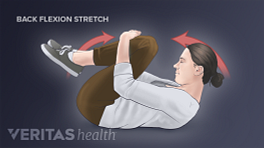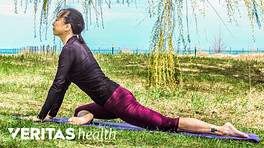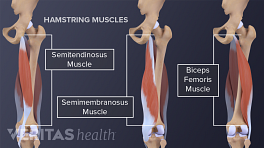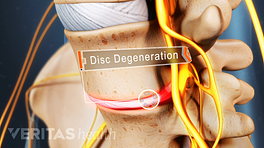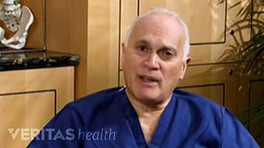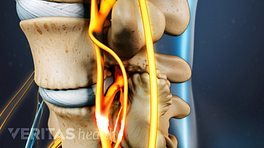Spinal stenosis can cause sciatica pain when the sciatic nerve root is irritated or impinged by the narrowing of the nerve’s passageway. When treating sciatica from spinal stenosis, flexion exercises, or forward bending, are often performed. Flexing the lower spine increases the size of the nerve root’s passageways and allows the irritation or impingement of the nerve roots to resolve.
Exercises to help alleviate the sciatica pain caused by spinal stenosis typically include a combination of specific stretching and strengthening exercises that focus on stretching the muscles of the back that hold the spine into extension or backwards bending, and strengthening the muscles that bring the back into flexion, or forward bending.
Let’s do the pelvic tilt. The pelvic tilt is an important technique because it is the basis of many of the other exercises we will be doing later.
To begin the pelvic tilt, lay on your back. Keep your knees bent with your feet flat on the floor. Now think about pulling your belly button in towards your spine. Your back will automatically flatten towards the floor. As you pull your belly button in, your pelvis will roll up towards your chest. Be very careful not to push with your legs to make your pelvis roll.
This is a position you will hold while you are performing many of the other exercises.
Let’s do the straight leg raise exercise for lower abdominal strengthening. Begin by lying on your back with knees bent up. Perform a posterior pelvic tilt to lock your pelvis in position. Straighten one knee out along the floor. Gently raise the straight leg 6 to 8 inches at a time and return to the starting position. Repeat with the other leg.
The hook lying march exercise helps with lumbar stabilization. Begin by lying on your back and start with performing a pelvic tilt. Keep your knees bent and slowly raise one leg at a time only an inch or two. The goal here is to do this without rolling your pelvis side to side. And if you lock your pelvis in position, it should stay fairly straight. It may be easier to monitor your pelvic motion by placing your fingers behind your pelvis.
You should be able to speak while doing these exercises, so you are not overworking yourself. If you are having a hard time raising the entire leg without moving your pelvis, begin by just raising one heel at a time and alternate.
To advance the hook-lying march exercise, perform the same leg movement. So keep your arms straight up toward the ceiling. Now lock your pelvis in position and as you raise your left leg, drop your right arm down over your head. Return to the starting position and alternate sides. Don’t let your pelvis tilt up or arch your back. Your back should stay relatively still while performing these exercises.
Let’s perform the four-point, back flexion exercise. Begin on hands and knees. Now sit back on your heels while your arms stay stretched out. Lower your chest towards the floor. Don’t reach forward with your hands. This should be a very comfortable stretch and should not be painful.
Let’s perform abdominal curl-ups. Begin by lying on your back with your knees bent up. Fold your arms across your chest and perform a posterior pelvic tilt. Curl up, lifting your head and shoulders from the floor straight towards the ceiling. Hold for 2 to 4 seconds, then slowly lower to the starting position. Do not attempt to lift the head up too high. As strength builds, aim to complete 2 sets of 10 curls.
For patients with neck pain, place your hands behind the head to support the neck. Be careful not to lift your head with your hands.
Let’s perform the double knee to chest stretch. Begin by lying on your back. Now pull your knees up to your chest slowly until your feel a light stretch in your low back. When performing this stretch, keep your head relaxed and flat against the floor.
To modify this stretch, pull one leg up at a time for added comfort to your low back.
This video accompanies the article: Exercise for Sciatica from Spinal Stenosis


